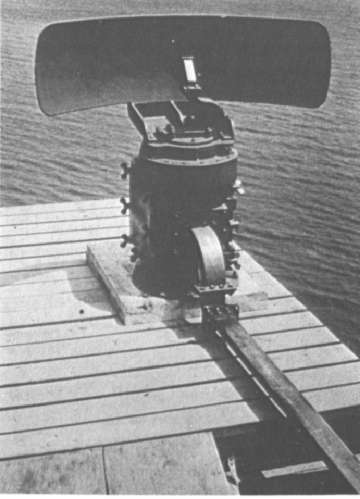|
The SG radar, along with the TBS radio, was certainly the equipment that
prevented the U.S. Navy from being swept aside during the fierce night
battles fought in the dark waters of the Solomons Islands chain.
The SG
radar was state of art technology when introduced in 1942. It had long
been clear that the shorter wavelength would make for a more efficent radar
at least on low altitude, but there had been no energy source powerful
enough to create such frequencies. The British had, however, achieved that
goal and when in 1940, British and American scientific advantages were
exchanged, the British handed the Americans the magnetron, capable of managing
just those requirements needed for microwave radar.
Microwave
frequencies made for smaller antennas while retaining good performance.
The SG proved this.
The SG
radars small size made it possible to fit it to most U.S. warships. It
was first tried on the destroyer Semmes in June 1941, and starting
April 1942, it was placed on virtually all U.S. warships as large as a
destroyer. Over 1000 total were build of all versions, but only SG to SG-3
were build during the war. SG, SG-1, SG-2, SGb and SG-1b were the most
frequent and earliest variants, 955 of them being build up to 1943, and
varied only slightly from each other, mainly being field modifications
of the earlier sets. SG-3 incorporated a new antenna and used a shorter
wavelength of 8.6cm, giving better range and resolution and a more precisely
defined beam. It was only produced starting mid-1945 and did not come into
use during World War II.
|
 |